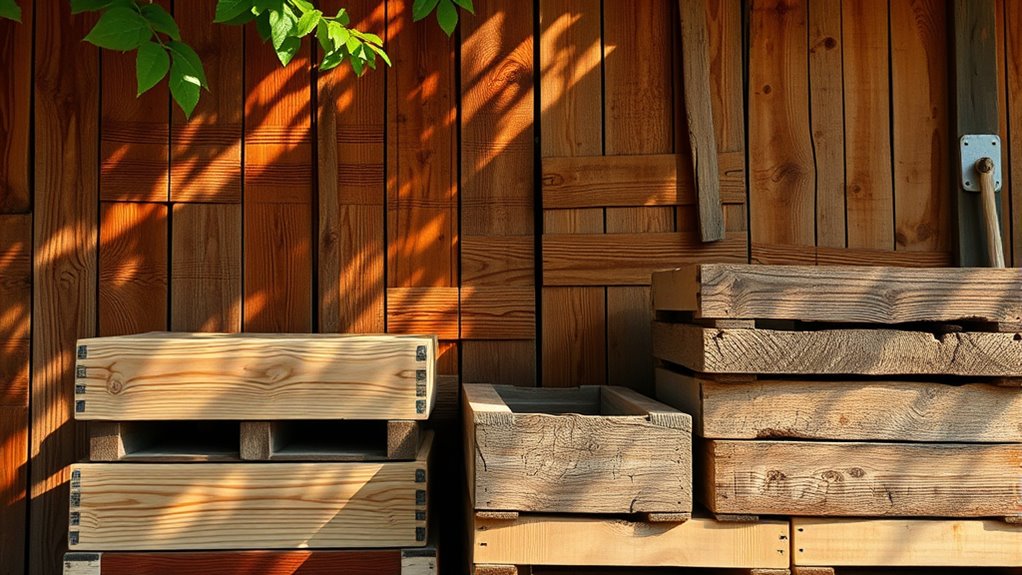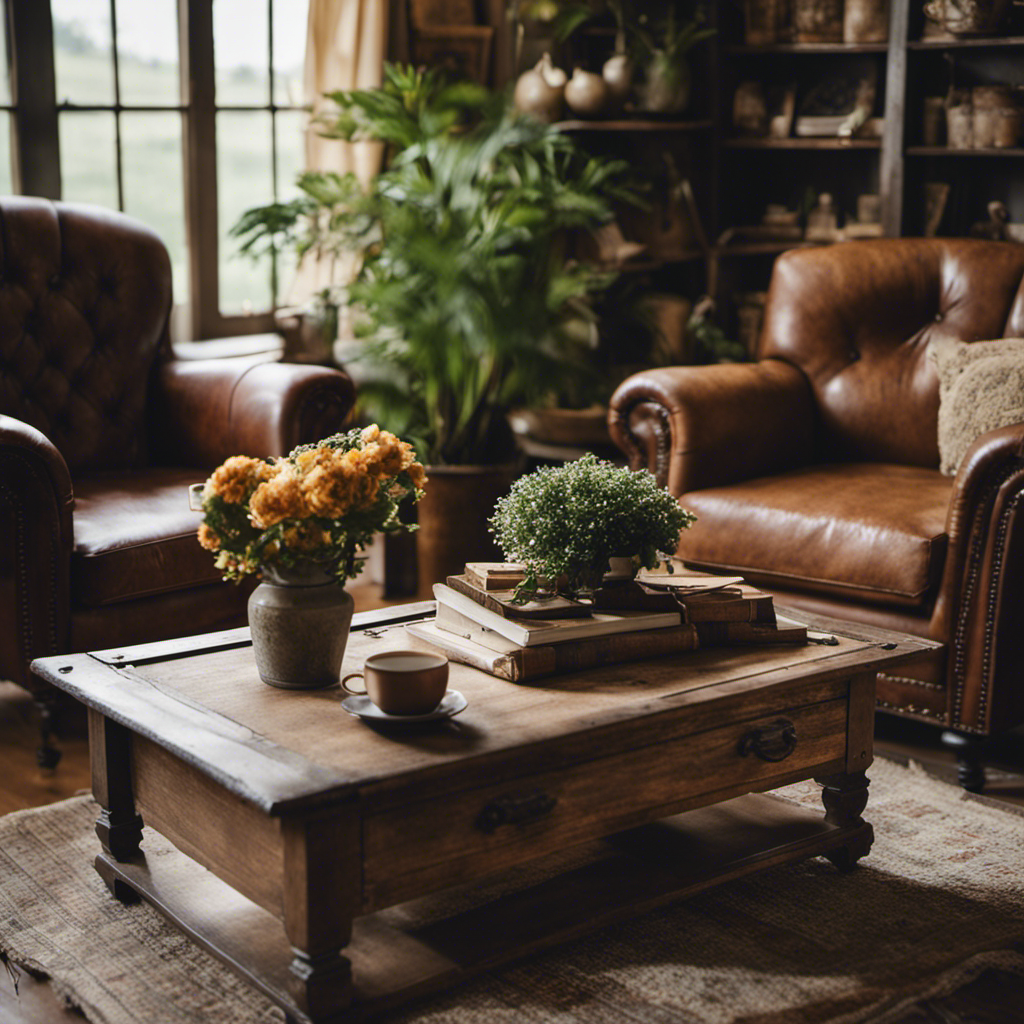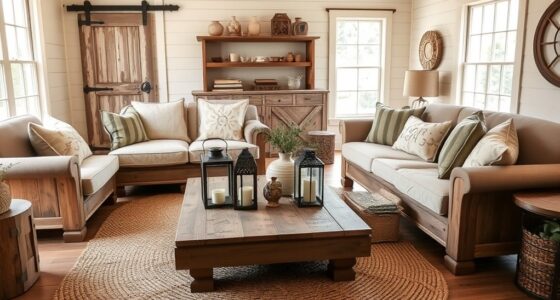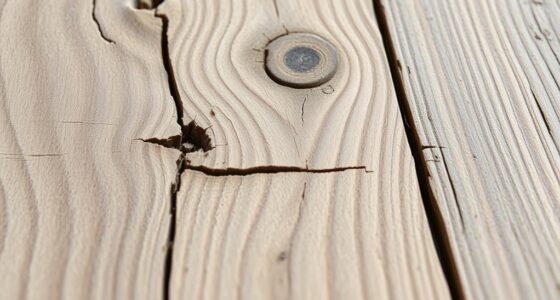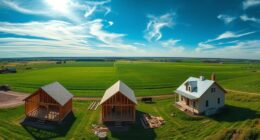Choosing the right wood for farm projects depends on your needs. Hardwoods like oak and hickory offer strength and longevity, making them great for load-bearing structures, while softwoods like cedar and redwood are naturally resistant to decay and ideal for outdoor furniture or fencing. Properly treating and finishing your wood enhances durability, regardless of type. To build lasting, cost-effective farm projects, understanding these pros and cons will help you select wisely—continue exploring to learn more.
Key Takeaways
- Different wood species vary in natural resistance to decay, pests, and moisture, impacting durability in farm environments.
- Hardwoods like oak and hickory are long-lasting and strong, suitable for load-bearing structures.
- Softwoods such as cedar and redwood are more affordable and naturally resistant, ideal for fencing and outdoor furniture.
- Proper treatment, sealing, and finishing extend the lifespan of softer or less resistant woods on the farm.
- Selecting the right species and applying correct woodworking techniques reduce maintenance and increase project longevity.
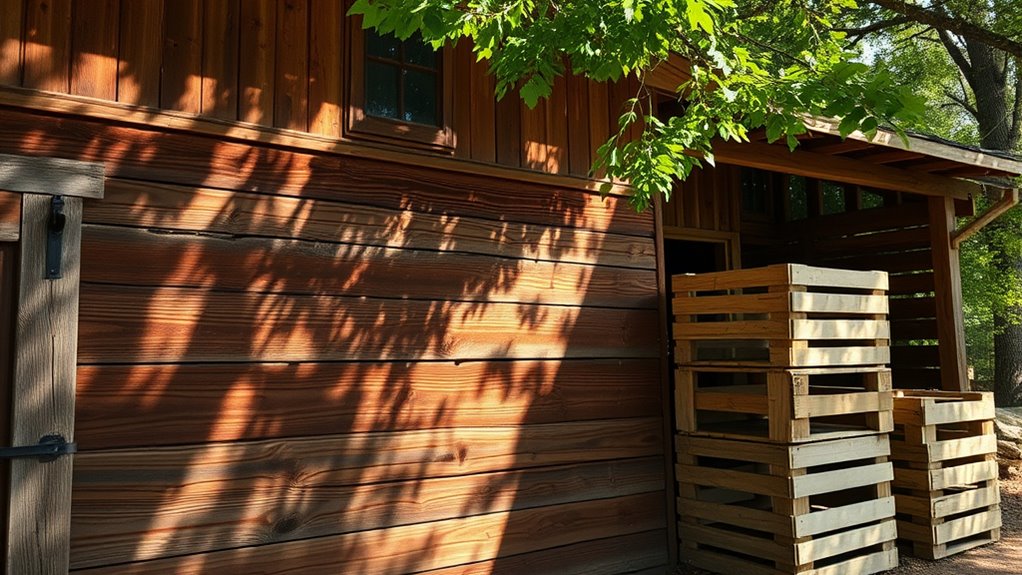
Choosing the right wood species is vital for ensuring your project looks great and lasts long. When working on farm-related projects, you need materials that can withstand the elements, heavy use, and sometimes rough handling. Understanding the wood’s durability helps you select the best type for your needs. Wood durability varies considerably between species; some woods naturally resist decay, pests, and moisture, making them ideal for outdoor or high-stress applications. For example, hardwoods like oak and hickory are known for their strength and longevity, while softwoods like pine might need additional treatment to perform well over time. Getting familiar with these differences will help you avoid premature decay or damage, saving you time and money down the line.
In addition to choosing durable wood, mastering proper woodworking techniques is vital. The way you cut, join, and finish your wood influences its lifespan and appearance. For farm projects that endure constant exposure to weather or heavy use, applying appropriate sealing, staining, or treating methods enhances the wood’s resistance to moisture, pests, and wear. Techniques like proper drying, avoiding excessive knots that weaken the structure, and using the right fasteners contribute to the overall strength and durability of your work. For example, using galvanized or stainless steel screws prevents rusting, especially in damp environments. If you’re building things like fencing, barns, or feed troughs, paying attention to these woodworking techniques ensures your structures stay intact longer, reducing the need for frequent repairs. Understanding wood species and their properties can further guide your project choices.
Furthermore, selecting the right wood species based on your specific application simplifies your work. Softwoods like cedar or redwood are excellent choices for outdoor furniture or fencing because of their natural resistance to decay. Hardwoods such as maple or walnut, while more challenging to work with, provide exceptional strength for load-bearing structures. Knowing how each species responds to environmental factors allows you to tailor your woodworking techniques accordingly. For example, when working with softer woods, you might want to reinforce joints or use protective coatings. On the other hand, with durable hardwoods, focus on precise cuts and finishes to highlight their natural beauty while maintaining their integrity.
Ultimately, choosing the right wood species and applying proper woodworking techniques are vital steps in creating farm projects that stand the test of time. By understanding the strengths and weaknesses of different woods, you can plan better, work smarter, and build structures that meet your farm’s demands. Being mindful of how your choices affect wood durability and how you handle the material will make a noticeable difference in the longevity and functionality of your projects.
Frequently Asked Questions
How Does Climate Affect Wood Durability on Farms?
Climate impacts wood durability on farms by exposing it to seasonal weather changes like rain, humidity, and temperature swings, which can cause expansion, contraction, and decay. You’ll find that pests thrive in warm, moist conditions, so choosing wood with good pest resistance is essential. Proper treatment and maintenance help prolong wood’s lifespan, ensuring it withstands climate challenges and stays strong for your farm’s needs.
Can Reclaimed Wood Be Safely Used for Farm Structures?
Reclaimed wood can be as strong as new when you prioritize safety, but you must assess it carefully. You should check for pests, mold, and structural damage to guarantee reclaimed wood’s safety for farm structure integrity. If properly inspected and treated, reclaimed wood offers durability and character. Don’t risk your farm’s stability; instead, verify its condition to confidently reuse it, making your farm safer and more sustainable.
What Sustainable Wood Options Are Best for Farm Use?
When choosing sustainable wood options for your farm, look for eco-friendly harvesting practices and certified sustainable sources. These guarantee the wood is harvested responsibly, reducing environmental impact. Hardwoods like FSC-certified oak or cedar are durable and eco-conscious choices, perfect for fencing or structures. By prioritizing certified sustainable sources, you support environmentally friendly forestry, helping your farm stay sustainable and eco-friendly while providing long-lasting, safe materials for your daily farm needs.
How Often Should Farm Wood Structures Be Maintained?
Did you know that regular maintenance can extend the lifespan of your farm structures by up to 50%? You should establish a maintenance schedule, inspecting your wood structures at least twice a year. Regular inspections help identify early signs of damage or rot, allowing you to address issues promptly. Stick to a consistent inspection frequency, and you’ll keep your farm structures safe, durable, and cost-effective for years to come.
Are There Specific Wood Treatments for Farm Environments?
When considering wood treatments for farm environments, you should focus on wood preservation and pest resistance. Use pressure-treated lumber or apply sealants that contain preservatives to protect against moisture and decay. Additionally, choose treatments with pest-resistant properties to prevent insect damage. Regular maintenance, combined with these specific treatments, guarantees your farm structures stay durable and safe over time, reducing the need for frequent replacements.
Conclusion
Choosing the right wood is like planting seeds for a thriving farm—each type offers unique strengths and challenges. By understanding the pros and cons, you can craft a durable, natural foundation that stands tall through life’s storms. Think of your selection as a sturdy bridge connecting your farm’s future to its roots. With the right wood, you create a landscape that’s resilient, beautiful, and built to last—turning everyday farm life into a well-oiled, harmonious symphony.

